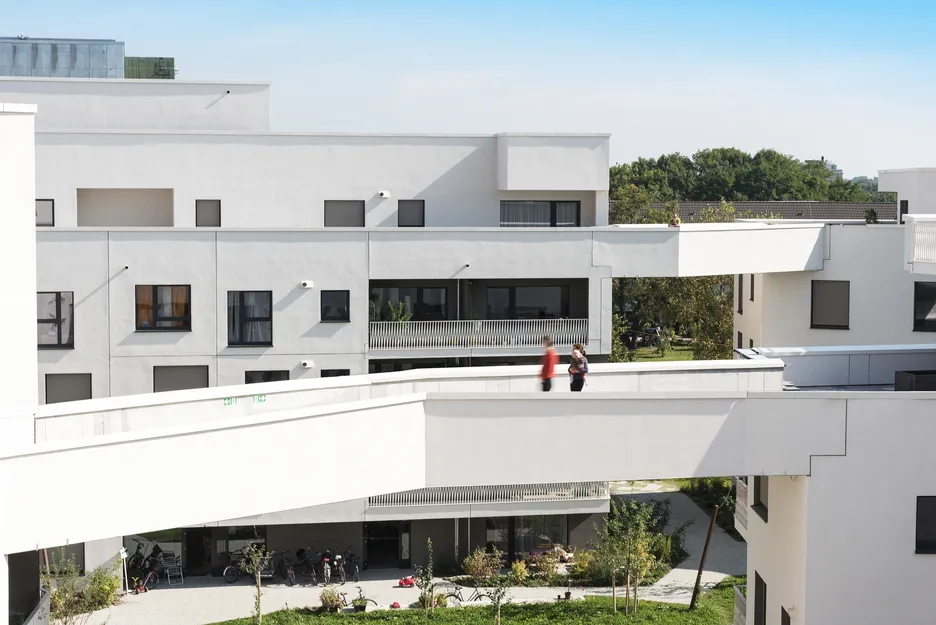Joint sustainable building project: Ecological assessment of the wagnisART cooperative housing project

Project duration
2013-2016
Funding organization
Wohnbaugenossenschaft wagnis eG
funded by the Supreme Building Authority in the Bavarian State Ministry of Internal Affairs, Building and Transport
Project partners
Wohnbaugenossenschaft wagnis eG
-
Elisabeth Hollerbach, project manager
-
Jörg Knorre, PAG Nachhaltigkeit
bogevischs buero architekten & stadtplaner GmbH
-
Dipl.-Ing. Julius Klaffke
-
Dipl.-Ing. Rainer Hoffmann
-
Dipl.-Ing. Cornelia Müller
Schindler | Hable Architekten GbR
-
Dipl.-Ing. Walter Hable
-
Dipl.-Ing. Udo Schindler
henke rapolder frühe Ingenieurgesellschaft mbH
-
Dipl.-Ing. Thomas Linder
-
Dr.-Ing. Peter Henke
Energie System Technik GmbH
-
Dipl.-Ing. Michael Brünner
-
Dipl.-Ing. Michael Wittmer
-
Dipl. Wirtsch. Phys. Stefan Moosreiner
Technical University of Munich (TUM)| ENPB Institute
-
Prof. Dr.-Ing. Werner Lang
-
Dipl.-Ing. Patricia Schneider-Marin
Supreme Building Authority in the Bavarian State Ministry of Internal Affairs, Building and Transport Department for technical matters in housing construction, experimental housing construction
-
Dipl.-Ing. Karin Sandeck
-
Dipl.-Ing. Florian Plajer
Summary
The wagnisART project is unique in many ways: not only its architectural design but also its participatory planning process and ambitious sustainability goals reflect its pioneering character. The Institute of Energy Efficient and Sustainable Design and Building (ENPB) provided scientific support by analyzing and assisting in the implementation of the sustainability targets set for the project.
This included calculating the embodied energy and CO2 emissions to make them available for future projects. It emerged that the support structure accounts for a large part of the energy demand and emissions and that the operating phase plays a major role despite the high energy standard (ultra-low energy house). For this reason, the calculations were supplemented by comparative calculations that helped determine the potential of a timber support structure to save energy and reduce emissions and investigate the influence of façade materials and energy standards. The purpose of these studies is to find out at what stages of the planning process there is a need for information to enable a sustainable approach. Early availability of relevant information to assist decision making in future projects can help to better assess and positively influence the impact of certain decisions on future sustainability.
While being more difficult to quantify, social aspects of sustainability are equally relevant. These aspects are addressed in an exemplary way by wagnisART. This is not least due to the long lead time of the project, which even included the possibility to influence the development plan. Our research activities did not commence until the stage where the plan approval process had already been completed. For future projects, it is our aim to begin engagement in sustainability consulting at an earlier stage of the project so that all stakeholders have an overarching notion of the concept of sustainability from the outset.
The research report (available in February 2017) contains information intended for replication in future projects.
Related links
The report on the scientific support project is published by the Supreme Building Authority in the Bavarian State Ministry of Internal Affairs, Building and Transport. It can be ordered or downloaded free of charge from the order portal of the Bavarian State Government. Download link:
Download link: